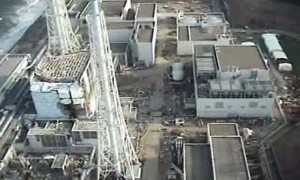Japan’s Fukushima Daiichi nuclear plant get calm on radiation claims Tepco
Monday, October 17th, 2011 7:56:46 by Samer Ahmed
Japan’s Fukushima Daiichi nuclear plant get calm on radiation claims Tepco
Tokyo Electric Power Company (Tepco) has claimed that the Fukushima Daiichi nuclear plant has reduced its radioactive emissions from the last month. Now the radiations have almost dropped to its half.
Japan’s nuclear plant was damaged in the severe earthquake disaster that struck the country in March. The earthquake also activated a high scale tsunami which ruined structure of the country. The nuclear plant was severely damaged during the quake shocks.
Tepco vice president, Zengo Aizawa said, “Our latest measurements show that radiation from the damaged reactors is 100 million Becquerels per hour, which is one eight-millionth of the amount measured soon after the accident.”
The vice president further explained that it is calculates about 0.2 millisievert per year of radiation at the brims of the plant. It reads below according to the safety regulations implemented by government that is 1 millisievert.
Yoshinori Moriyama, deputy director-general of the government watchdog Nuclear Industrial and Safety Agency shared few words during the press meeting, “We still need to proceed with care. We need to continue monitoring whether the temperatures of the reactors and radiation levels being emitted remain stable going forward.”
The team at the nuclear plant has declared it to be a progress to control the radiations. The radiations after the earthquake were recorded double the amount at the moment.
The breach of the reactor caused the nuclear fuel to melt down due to the overheating of the cells. Now the team is successfully capable to cool down the reactors.
The Tepco has announced that it plans for ‘cold shutdown’ by the end of the year. Earlier plan was to shut the reactor in January.
From a technical point of view the plant reaches a cold shutdown state when the water used for cooling nuclear fuel remains under 100 degree Celsius. It prevents the fuel from reheating after shut down.
The mark to cool the water was achieved by developing a new cooling system for the reactor. It significantly helped the water to remain under the 100 degree Celsius mark in the late September.
The all three damaged reactors are now under control. At the moment government is not planning for an immediate cold shutdown.
Short URL: https://www.newspakistan.pk/?p=305

















